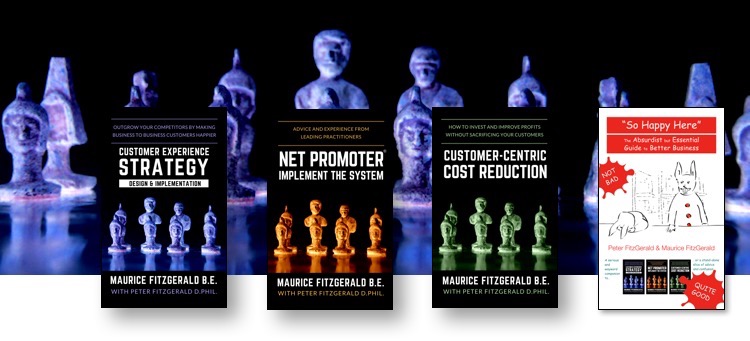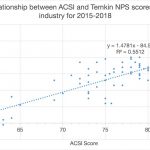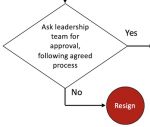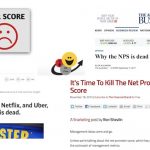#95 – Change equation – Are your metrics any good? – Great NPS podcast – Jeb’s Jobs technical support (funny)
 The Change Equation. Is your CX metric useful? A great new NPS podcast. A source for free-to-use images. Welcome to the 95th edition of my customer strategy newsletter. The five topics this week are:
Change equation updateI wrote about what I called the change equation in this newsletter about six months ago. I came across what I wrote again yesterday and realize my information was incomplete. Here is the full information. For change to happen, three elements are necessary:
While the subject of this newsletter is customer-centric business strategy you should be able to see lots of useful examples all around you. In France, for example, the ‘Gilets Jaunes’ protests show a large number of people who are clearly dissatisfied with their current situation. However, the lack of central leadership for the movement means they have no clear future vision and of course no practical first steps towards that vision. So it should be obvious that general dissatisfaction with the current state is not sufficient. The first thing you have to have is what I suppose should be called ‘specific dissatisfaction’. If you are a customer experience leader, or indeed lead any area of strategy, your list of things that need to be changed needs to be short and consistent. And to be consistent with myself, I would add that you need to be able to create dissatisfaction in your audience by telling stories, thereby creating emotions. (In another domain, think how great Greta Thunberg is at doing this.) Numbers, scores and trends just won’t create sufficient dissatisfaction on their own. If your data shows that you need to improve in a particular area, start the discussion with a story about an individual customer, ideally in their own words. Remember the old Bobby McFerrin hit Don’t Worry, Be Happy. What you sometimes want to communicate is the opposite: Do Worry, Be Sad! Finally, as noted the last time I mentioned the subject, the change equation is not my idea. Peter Mercury and Don Gordon promoted it strongly at DEC and Compaq and I believe it was their invention. How to understand whether your main satisfaction metric has any valueAs I come into contact with more and more companies selling to consumers I have been learning more about metrics and their interpretation. Since it is quite easy to game all measurement systems, I would like to suggest how you can tell whether your system has any value, meaning whether it measures what you think it measures. Let’s assume you are using NPS for this example, though you should be able to apply the same principle to any CX metric. It should be obvious that customers who like you are more likely to become repeat customers than those that hate you. So when you look at your loyal customer list, meaning all those who have ordered more than once, Promoters should be better represented on the list than Passives or Detractors. If not, your current survey process is worthless. If you do not know which of your survey respondents have only bought once from you and which are more loyal customers, well, then you have a different sort of problem and are probably not yet ready to ask for feedback. I hope this is reasonably clear. I will probably write more about the subject soon, possibly a full blog post with an example.
Our latest blog postsOlder posts are still available on the blog page.
Notable customer experience items from other sitesNet Promoter System podcast with Razia Richter – When an operator becomes CcOI thought this was one of the best episodes ever! Razia had a variety of senior positions at PetSmart before the CEO asked her to become Chief Customer Officer, a concept that was in its infancy at the time. I found several of her points particularly interesting. I suppose some of that was because she and I seem to agree on a lot of things. She placed a lot of emphasis on the need to communicate issues with personal customer stories rather than using dashboards full of numbers. And she gave a lot of useful advice about how to engage leadership team members in the improvement work. I hope you will enjoy it here. Comedy – Jeb’s Jobs – Technical supportThis apparently dates from 2005 but I had not seen it before today. Poor Jeb is not having a good day. Will he ever be able to eat his sandwich? Check it out here.
Looking forwardI was interviewed for customer experience articles for the Times business supplement and for the Wall Street Journal recently. The Times article appeared last week, though I have not been able to find an online version so far, so can’t provide a link. I will let you know when and if the WSJ article appears. It is about NPS. Here are links to all of our books on Amazon.com. Kindle versions are available in all stores. Print versions are available from the major stores only. And as of two weeks ago, you can find the books, or at least order them in many bookstores. If you have already read any of our books, please write reviews on Amazon. Customer Experience Strategy – Design & Implementation Net Promoter – Implement the System Customer-centric Cost Reduction “So Happy Here”: The Absurdist but Essential Guide to Better Business (Color edition) “So Happy Here”: The Absurdist but Essential Guide to Better Business (Black & White edition) Please share this newsletter with your friends and colleagues and encourage them to sign up for it here. I have put links to past newsletters on the subscription page. Finally, please feel free to change or cancel your subscription using the link below. You can also email me, Maurice FitzGerald, at mfg@customerstrategy.net. |
||||||
|
|






